Mashhad, located in northeast Iran, was once a crucial hub along the Silk Road. Today, it is the nation’s second most populous city, rich in history and spirituality. At its heart lies the revered sanctuary, Imam Reza Holy Shrine. This sacred place draws millions of pilgrims annually, making Mashhad a famous pilgrimage destination. Exploring Mashhad with a local guide on a daily tour offers visitors a chance to immerse themselves in its rich cultural and religious heritage.
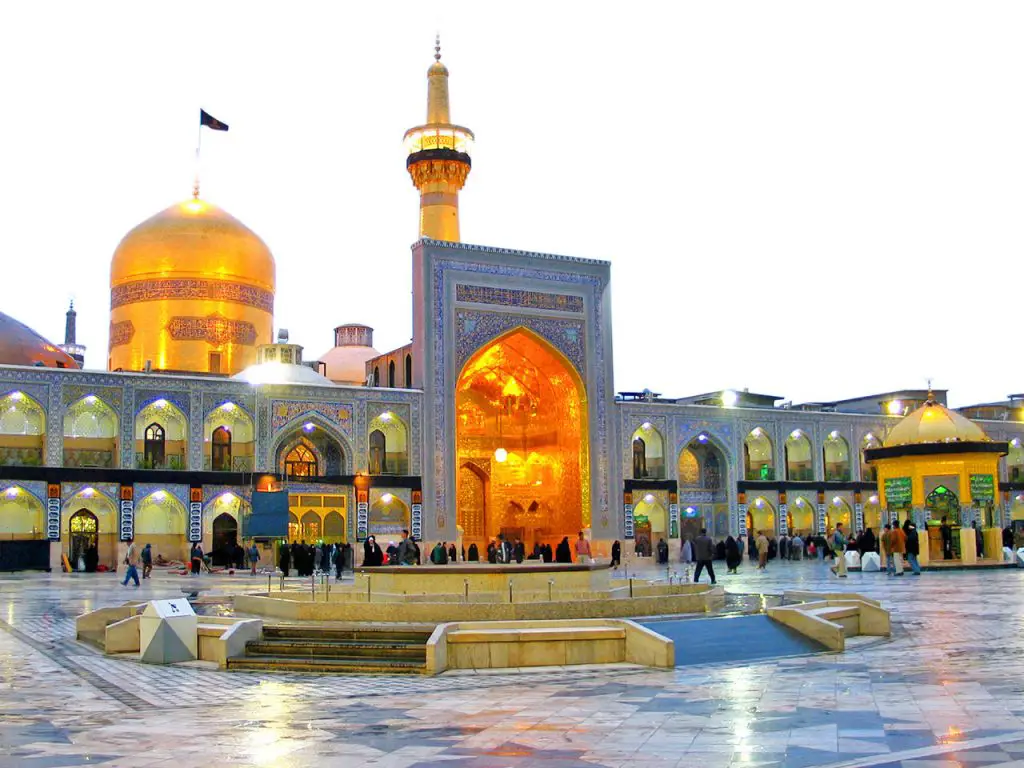
In addition to its religious significance, Mashhad is also known for its warm hospitality and vibrant culture. Pilgrims can indulge in traditional Iranian cuisine, explore local handicrafts and souvenirs, and experience the warmth and generosity of the city’s inhabitants.
The city’s vibrant atmosphere is evident, with busy markets, aromatic food stalls, and the melodious call to prayer echoing through its alleys. Visitors can immerse themselves in the city’s rich cultural heritage, exploring its historic landmarks, ornate mosques, and centuries-old bazaars.
If you’re considering traveling for Ziyarat in Iran, explore Visit Our Iran’s ziyarat tour packages page for comprehensive pilgrimage experiences.
Beyond the spiritual rituals, Ziyarat in Mashhad extends to the bustling streets outside the shrine. Here, pilgrims engage in acts of devotion while indulging in the city’s vibrant atmosphere. Many take the opportunity to explore the surrounding markets, where vendors offer an array of goods, from religious artifacts to local handicrafts.
Hotels nearby cater to the needs of pilgrims, providing a comfortable haven where they can rest and reflect after a day of spiritual exploration. In Mashhad, Ziyarat culture is not just a journey of the soul but a holistic experience that encompasses tradition, spirituality, and the city’s vibrant culture.
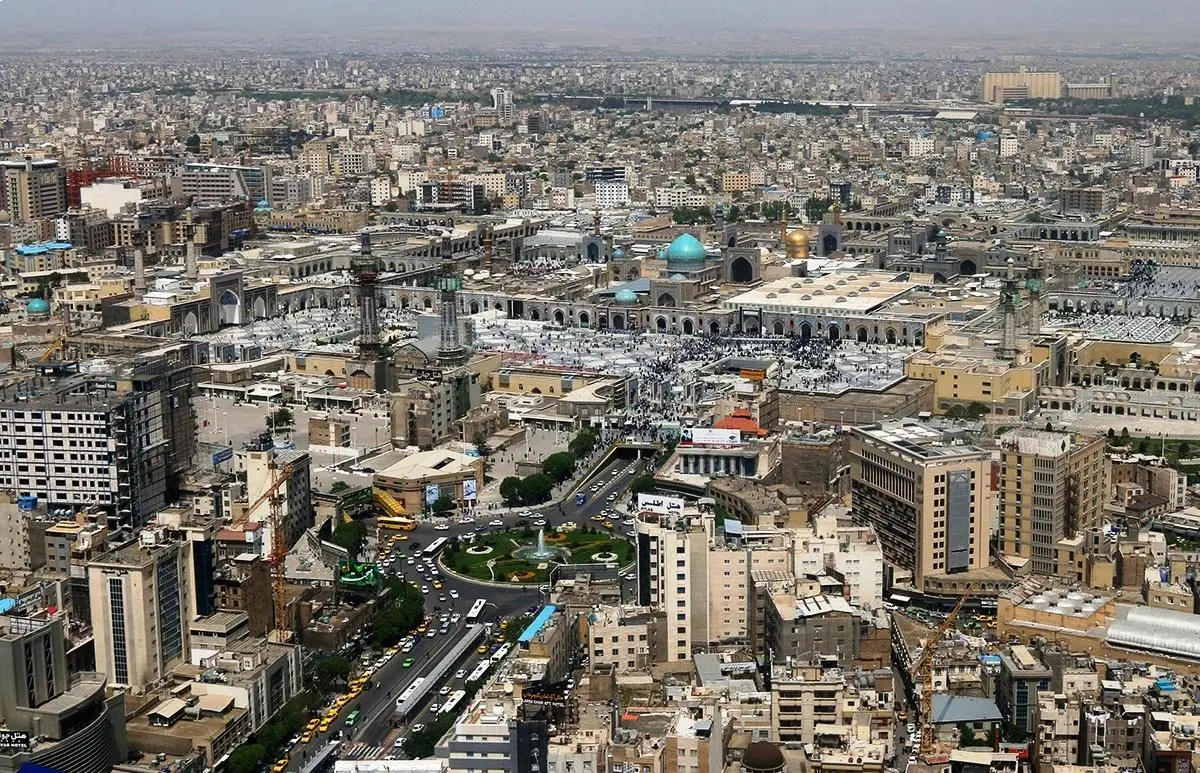
Accommodations for Pilgrims
Finding top-rated hotels in Mashhad is essential for pilgrims visiting the Imam Reza Shrine, ensuring a comfortable and enriching experience. Thankfully, Mashhad offers various hotels for visitors’ diverse needs, ensuring that pilgrims find both comfort and convenience during their spiritual journey.
Among the noteworthy hotels in Mashhad is Sinoor Mashhad, renowned for its elegant decor and exceptional services. Pilgrims can indulge in spacious rooms, modern amenities, and impeccable hospitality, all while enjoying close proximity to the Imam Reza Shrine.
Pardisan Mashhad also offers an elegant atmosphere and indulgent amenities for pilgrims seeking a luxurious place to stay. Guests can relax in beautifully furnished rooms, enjoy delicious cuisine at the hotel’s restaurants, and rejuvenate at the spa and wellness center.
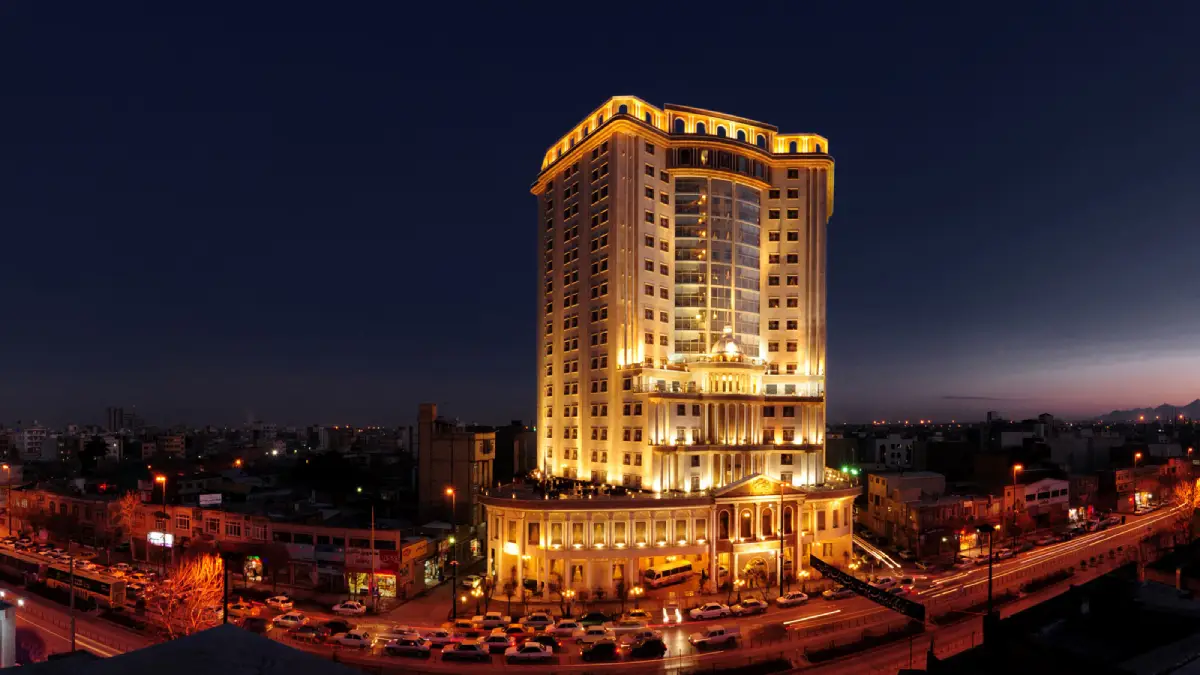
Homa 2 Mashhad offers a perfect balance of comfort and affordability, making it an ideal choice for budget-conscious pilgrims. Guests can enjoy a pleasant stay without exceeding their budget with cozy rooms, friendly staff, and easy access to the city’s religious sites.
Another popular option is Ghasre Talaee Mashhad, which is known for its elegant design, outstanding service, and stunning city views. Pilgrims can indulge in unparalleled luxury and tranquility, with amenities such as swimming pools, fitness centers, and fine dining options.
In addition to these hotels, Mashhad boasts a wide range of accommodation options, from charming guesthouses to modern apartments. Whether seeking luxury or simplicity, pilgrims can find the perfect place to rest and recharge after a day of spiritual exploration.
Overall, the hotels in Mashhad play a crucial role in enhancing the pilgrim experience, providing a welcoming sanctuary where guests can relax, rejuvenate, and reflect on their spiritual journey. With their warm hospitality and convenient amenities, these hotels ensure that every pilgrim’s stay in Mashhad is both memorable and fulfilling.
Imam Reza Shrine: A Center of Reverence
Ali ibn Moosa, also known as Reza, descended from Muhammad, the holy prophet of Islam, holds a revered place among Muslims worldwide. Born in Medina and later moving to Tus in Iran under the order of Ma’mun, the seventh Abbasid caliph, Imam Reza’s life holds great significance, particularly concerning his political and religious role, culminating in his martyrdom.
Imam Reza’s guidance of the public during his lifetime and his esteemed status as a religious figure transformed his shrine into a significant religious center, especially for Shia Muslims. The shrine has undergone extensive architectural developments throughout history, representing its revered status among Shia believers and various Shia and Sunni governments. Millions of tourists visit the Holy Shrine annually, recognizing it as one of Iran’s largest and most significant religious sites.
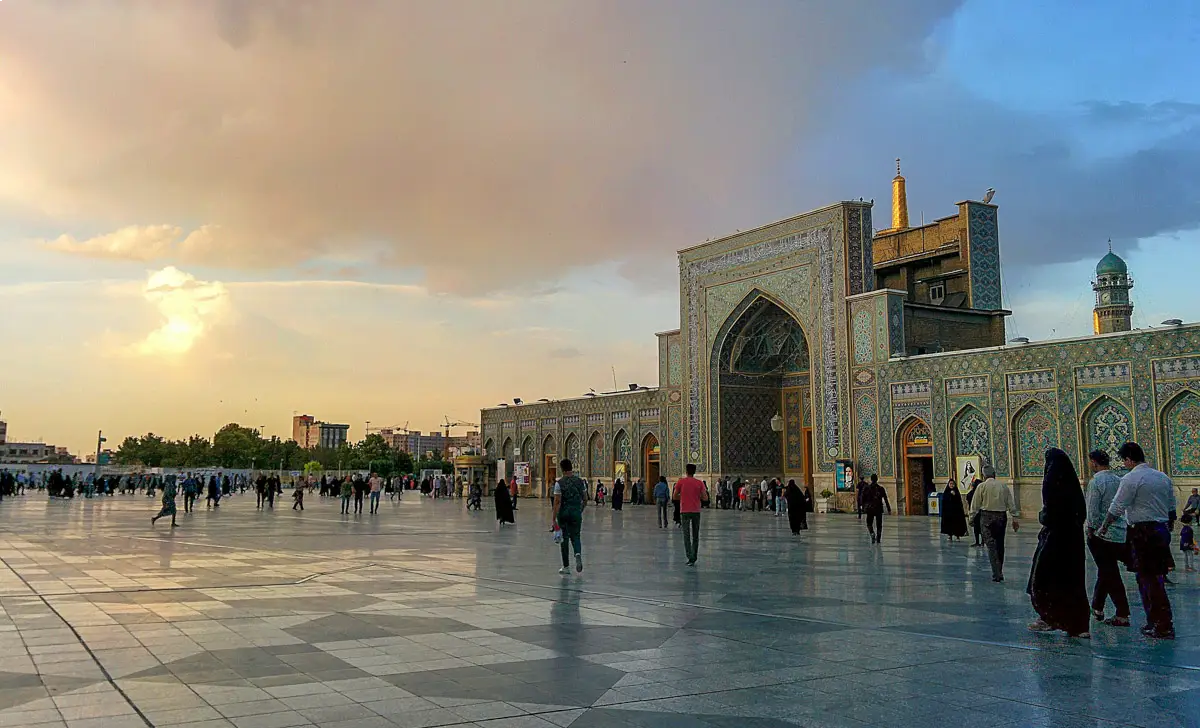
The historic architectural complex of Imam Reza’s shrine is accompanied by unique ethics and rituals, forming an inseparable part of its heritage and the broader culture of the region. These rituals, including dust clearing, playing Naqareh (a specific wind instrument), sweeping, Waqf (charitable endowments), and providing free food and services, reflect the unique spiritual essence of Imam Reza.
In a broader sense, the complex’s function, structure, decorative elements, facades, and surfaces symbolize the shrine’s ideology, religious unity, and evolution. It is a place of worship, an institution, and an identity shaped by religious beliefs. The shrine complex consists of numerous valuable architectural treasures around the central holy shrine, each carrying political, social, and artistic significance.
Mosques Adorning the City of Mashhad
Mashhad boasts various mosques, each with unique architectural charm and spiritual significance. From the grandeur of Goharshad Mosque to the tranquility of Khaje Aba Salt Shrine, these mosques offer pilgrims spaces for prayer and reflection. Visitors can experience the spiritual essence of Mashhad by visiting these sacred sites and participating in religious rituals.
Goharshad Mosque
Goharshad Mosque is a majestic congregational mosque built during the Timurid period, now located within the Imam Reza shrine complex. Empress Goharshad, the wife of Shahrokh of the Timurid dynasty, commissioned its construction in 1418 CE, leaving a lasting legacy in Iranian architectural history.
Goharshad Mosque is a true marvel, with delicate tile work and impressive engineering that make it a masterpiece of architectural artistry. Its sturdy construction features a classic design centered around a spacious courtyard with four porches, each adorned with stunning inscriptions in Thuluth script, crafted by Shahrokh’s son.
The southern porch, Maghsure Iwan, steals the show with its majestic arches and valuable artwork, showcasing original Iranian artistry. Mosaic art, popular during the Timurid era, can be admired throughout the mosque, adding to its beauty and allure.
Standing tall above the Maghsure Iwan is the striking blue dome, reaching a height of forty meters and adorned with intricate glazed bricks and inscriptions. Above the dome are two towering minarets, rising to forty-one meters and embellished with their own inscriptions, adding to the mosque’s grandeur.
Visitors shouldn’t miss the marble sanctuary at the end of Maghsure Iwan, adorned with elegant carvings and inscriptions, showcasing the finest Iranian art from the Timurid era.
On the right side of the sanctuary, a remarkable Minbar, or pulpit, crafted from walnut and pear wood without iron nails, stands as a testament to the skill of artisan Mohammad Khorasani from the Qajar dynasty. Known as Sahib-al-zaman, the Minbar is revered for its unique features and longevity, with some believing it will serve a significant role on Judgement Day.
Despite facing damage and undergoing repairs during the Safavid and Qajar periods, the Goharshad Mosque displays Timurid-era architecture, drawing visitors with its historical and architectural significance.
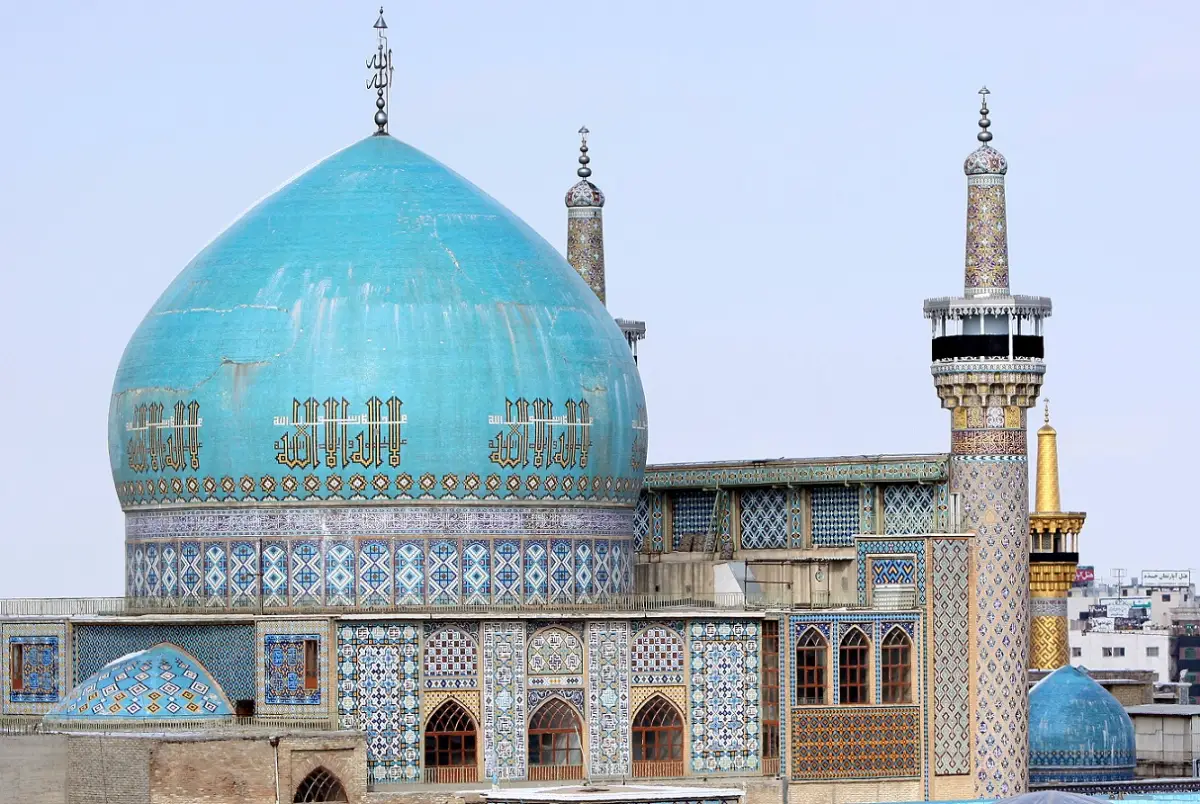
Khaje Aba Salt Shrine
Located 14 kilometers southeast of Mashhad, lies the mausoleum of Khajeh Abasalt, a close companion of Imam Reza. The main structure, quadrangular in shape, features a door on each side, inviting visitors to explore its sacred grounds. Khajeh Abasalt, known for his piety and dedication to Imam Reza, passed away four years after the Imam’s death in Mashhad. He was laid to rest beside the road to Neishabour, 12 kilometers from Mashhad, where his tomb has become a site of reverence and pilgrimage.
Having narrated many traditions from Imam Reza, Khajeh Abasalt’s legacy lives on, inspiring generations of believers. Recently renovated on a grand scale, his mausoleum continues to draw pilgrims seeking solace and spiritual connection. Amidst the spiritual aura of Khaje Aba Salt Shrine, pilgrims not only find spiritual nourishment but also have the opportunity to bring a piece of their journey home with them. Near the shrine, vendors offer myriad souvenirs that reflect the essence of Mashhad’s cultural heritage. From intricately crafted handmade crafts to traditional clothing and delectable local delicacies, these souvenirs serve as tangible mementos of the pilgrim’s spiritual quest and the rich tapestry of experiences encountered along the way.
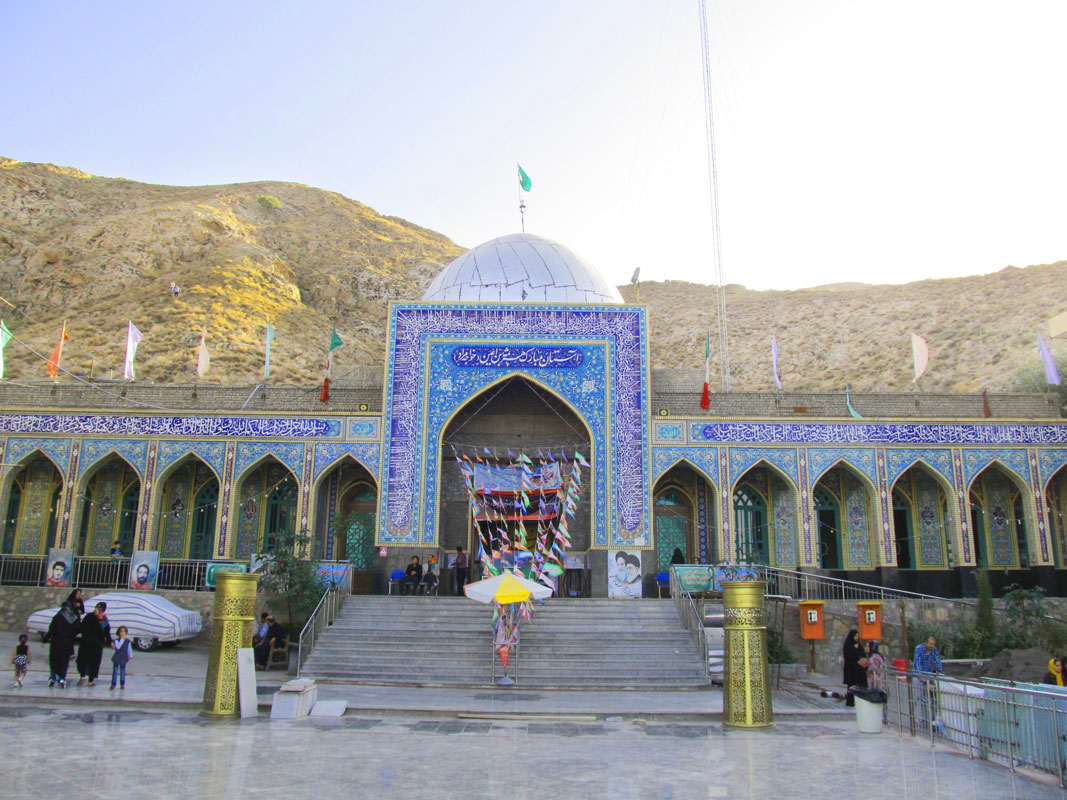
To gain a comprehensive understanding of ziyarat (pilgrimage) in Iran, we invite you to explore our article “Iran Ziyarat Guide: Shrines in Iran“.
Acts of Reverence at Imam Reza Shrine
Ziyarat culture embodies a profound spiritual journey steeped in tradition and reverence in the sacred city of Mashhad. Pilgrims from all corners of the globe flock to the Imam Reza Shrine, where the rituals of ziyarat unfold in a deeply spiritual atmosphere. Before entering the shrine, it is customary for pilgrims to perform ghusl, a ritual purification bathing that symbolizes a cleansing of the soul before approaching the holy site. With hearts filled with devotion, pilgrims offer prayers and supplications, seeking blessings and guidance from Imam Reza.
Dua is an integral aspect of the pilgrim experience in Mashhad, as it provides a direct channel for communication with the divine. Pilgrims approach the shrine with reverence and humility, their hearts filled with devotion as they recite prayers in various languages, beseeching Allah for forgiveness, guidance, and fulfillment of their wishes and needs. Whether whispered in quiet reverence or recited aloud amidst the bustling crowds, these prayers carry the hopes, dreams, and aspirations of pilgrims who have traveled far and wide to seek solace and spiritual enlightenment.
At the Imam Reza Shrine, special prayers hold a significant place in the hearts of pilgrims. These prayers, offered with reverence and devotion, are integral to the ziyarat experience. Pilgrims engage in various acts of worship, seeking the blessings and intercession of Imam Reza.
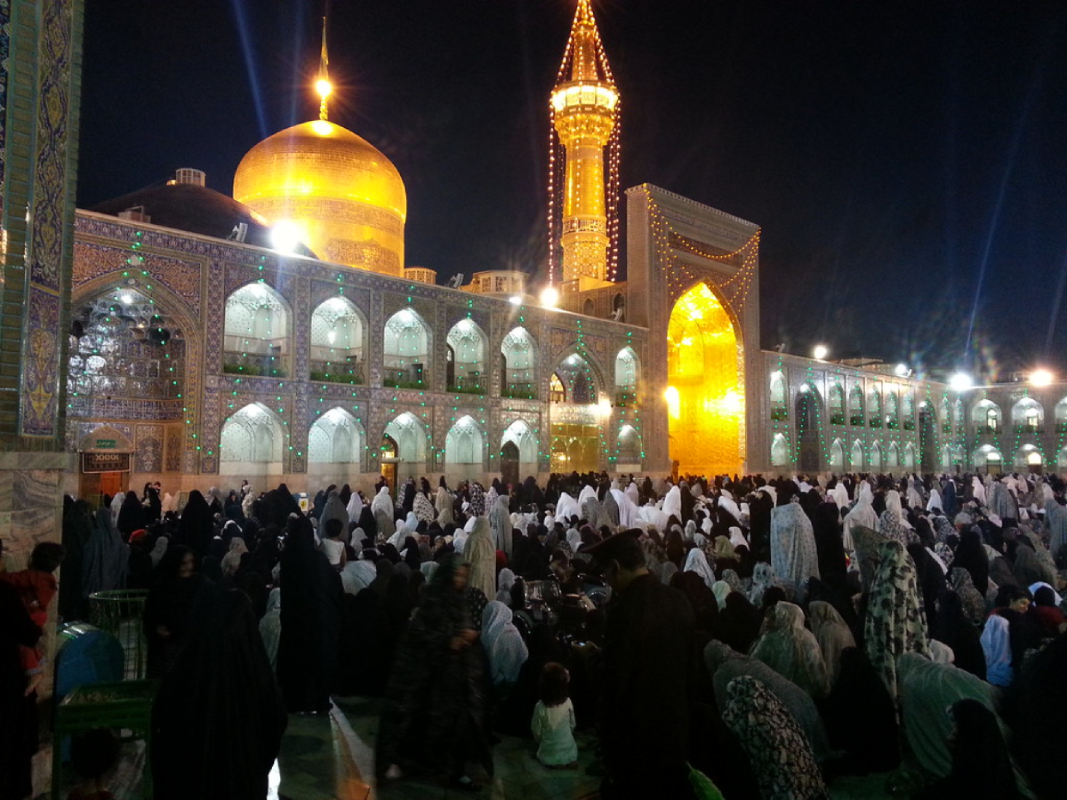
Additionally, during and after ziyarat, pilgrims engage in salaat (Islamic prayers). These prayers are a means of connecting with the divine and expressing gratitude for the opportunity to visit the holy shrine. Through these acts of devotion, pilgrims create a deeper spiritual connection with Imam Reza and experience a profound sense of peace and tranquility within the shrine’s sacred precincts.
As part of the ziyarat culture, wearing a chador, a traditional garment, is essential for women. The chador symbolizes humility and modesty, allowing pilgrims to immerse themselves fully in the spiritual experience. Wrapped in the comforting embrace of their chadors, pilgrims experience a journey of introspection and prayer, connecting with the divine presence that permeates the sacred space of the shrine.
These are all profound acts of reverence deeply ingrained in the traditions of ziyarat culture. Pilgrims undertake sacred rituals as a mark of respect and devotion when visiting the revered Imam Reza Shrine. Each tradition holds significance in the hearts of pilgrims, symbolizing a deep connection to the divine and a commitment to spiritual purification and communion.
In Conclusion
As pilgrims immerse themselves with the sacred city of Mashhad, they are enveloped in a profound sense of spirituality and reverence. From the majestic Imam Reza Shrine to the serene mosques that adorn its streets, Mashhad offers pilgrims a sanctuary for prayer, reflection, and connection with the divine. With its rich history, vibrant culture, and spiritual significance, Mashhad remains a cherished destination for those seeking spiritual enlightenment and a deeper connection with their faith.
At Visit Our Iran, we understand the significance of this sacred pilgrimage and strive to offer comprehensive support to ensure a memorable and fulfilling experience. Our Ziyarat packages are thoughtfully crafted to cater to the needs and preferences of pilgrims, providing seamless arrangements for transportation, accommodations, and guided tours of the holy sites in Mashhad. Whether you’re traveling solo, with family, or in a group, our experienced team is dedicated to ensuring that your journey is spiritually enriching and hassle-free.
To learn more about our Ziyarat packages and how Visit Our Iran team can support your pilgrimage to Mashhad and the Imam Reza Shrine, visit our website or contact us today. Let us be your trusted companion on this sacred voyage of faith and devotion.